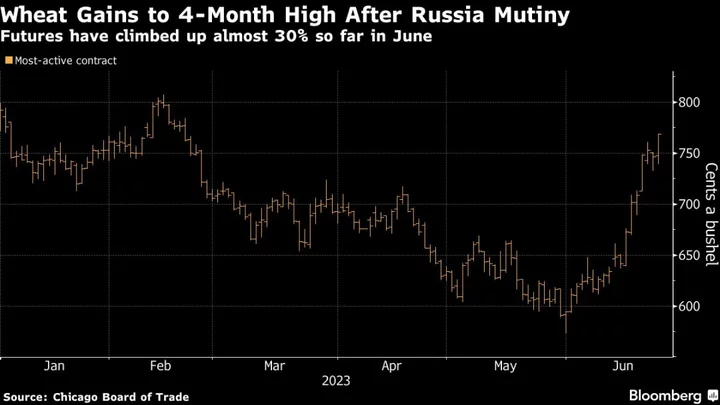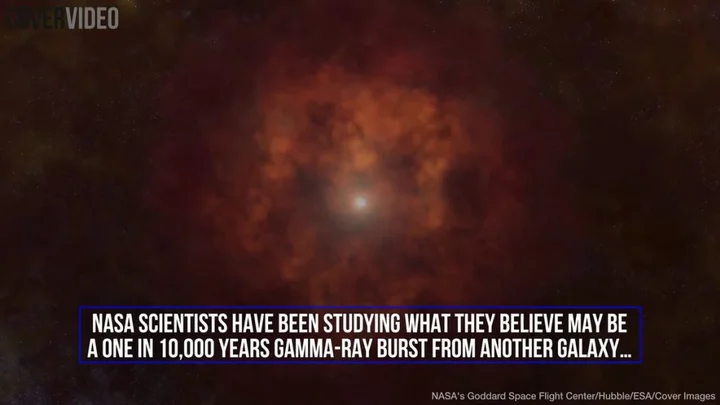
Stephen Lawrence: New suspect named in racist murder of Black British teenager
A new suspect has been named in the racist murder of Black teenager Stephen Lawrence in southeast London over 30 years ago.
2023-06-26 21:50

Analysis: Why Prigozhin's short-lived Russian rebellion failed
Wagner mercenary boss Yevegeny Prigozhin over-reached and lost.
2023-06-26 21:50

Supreme Court leaves in place lower court opinion invalidating North Carolina charter school skirt requirement
The Supreme Court on Monday left in place a lower court opinion that invalidated a code of conduct at a North Carolina publicly funded charter school that required girls to wear skirts in order to "preserve chivalry" based on the belief that every girl is a "fragile vessel."
2023-06-26 21:48

With eyes on Russia, Germany ready to station troops permanently in Lithuania
BERLIN (Reuters) -Berlin is ready to station a 4,000-strong army brigade in Lithuania permanently in coordination with NATO defence planning
2023-06-26 21:19

Analysis-Fever over BlackRock's bitcoin fund faces chill of rate hikes and regulations
By Elizabeth Howcroft LONDON BlackRock's plans for a bitcoin fund have helped push the world's largest cryptocurrency to
2023-06-26 20:49

Airport worker dies after being 'ingested' into plane engine in Texas
A ground worker was killed at San Antonio International Airport after being "ingested" into a plane's engine Friday, officials said.
2023-06-26 20:27

Syria war: Nine killed as Russia air strike hits Idlib market
The UN expresses deep concern about escalating hostilities after Russian jets bomb rebel-held Idlib.
2023-06-26 19:56

At least one dead, dozens of homes damaged after storms hit US Midwest and South
By Kanishka Singh Tornadoes and thunderstorms hit the U.S. Midwest and South on Sunday, leaving dozens of homes
2023-06-26 19:56

Ukraine Recap: Germany Ready to Place 4,000 Troops in Lithuania
Sign up to receive the Balance of Power newsletter in your inbox, and follow Bloomberg Politics on Twitter
2023-06-26 19:29

New images show Chinese spy balloons over Asia
BBC Panorama worked with an artificial intelligence company to sift through millions of satellite pictures.
2023-06-26 19:27

Astronomers discover a totally new way that stars can die
Astronomers have discovered a new way that stars can die. In a study published in the journal Nature Astronomy, experts have worked out that a minute-long gamma-ray burst of light, which occured in 2019 and evidence a star dying, happened because stars collided within the densely crowded environment near the supermassive black hole at the centre of an ancient galaxy. Normally gamma-ray bursts (GRB) last around two seconds and happen when stars collapse. “For every hundred events that fit into the traditional classification scheme of gamma-ray bursts, there is at least one oddball that throws us for a loop,” said study coauthor Wen-fai Fong, assistant professor of physics and astronomy at Northwestern University’s Weinberg College of Arts and Sciences, in a statement. “However, it is these oddballs that tell us the most about the spectacular diversity of explosions that the universe is capable of.” Over time, astronomers have observed three main ways that stars can die, depending on their size. Lower mass stars like our sun shed their outer layers as they age, eventually becoming dead white dwarf stars. Sign up to our free Indy100 weekly newsletter Massive stars burn through the fuel-like elements at their core and shatter in explosions called supernovas. Doing so can leave behind dense remnants like neutron stars or result in the creation of black holes. A third form of star death results when neutron stars or black holes begin to orbit one another in a binary system and spiral closer to one another until they collide and explode. But the new observation suggests a fourth type of death. “Our results show that stars can meet their demise in some of the densest regions of the universe, where they can be driven to collide,” said lead study author Andrew Levan, an astrophysics professor at Radboud University in Nijmegen, Netherlands, in a statement. “This is exciting for understanding how stars die and for answering other questions, such as what unexpected sources might create gravitational waves that we could detect on Earth.” “The lack of a supernova accompanying the long GRB 191019A tells us that this burst is not a typical massive star collapse,” said study coauthor Jillian Rastinejad, a doctoral student of astronomy at Northwestern, in a statement. “The location of GRB 191019A, embedded in the nucleus of the host galaxy, teases a predicted but not yet evidenced theory for how gravitational-wave emitting sources might form.” “While this event is the first of its kind to be discovered, it’s possible there are more out there that are hidden by the large amounts of dust close to their galaxies,” said Fong, who is also a member of the Center for Interdisciplinary Exploration and Research in Astrophysics at Northwestern. “Indeed, if this long-duration event came from merging compact objects, it contributes to the growing population of GRBs that defies our traditional classifications.” You learn something new every day. Have your say in our news democracy. Click the upvote icon at the top of the page to help raise this article through the indy100 rankings.
2023-06-26 19:27

The tech flaw that lets hackers control surveillance cameras
Security flaws in two surveillance camera brands used around the world have been identified by Panorama.
2023-06-26 19:23
